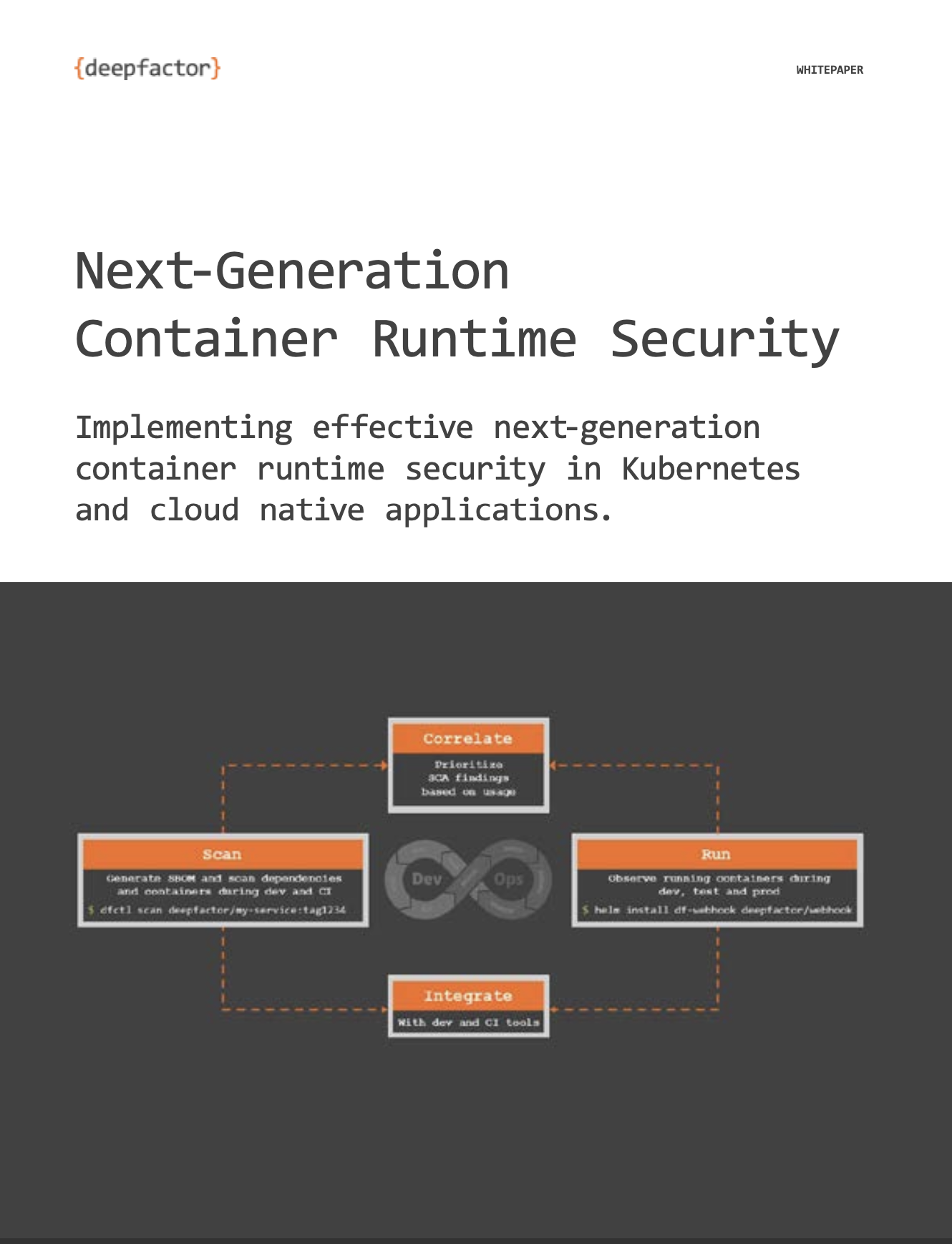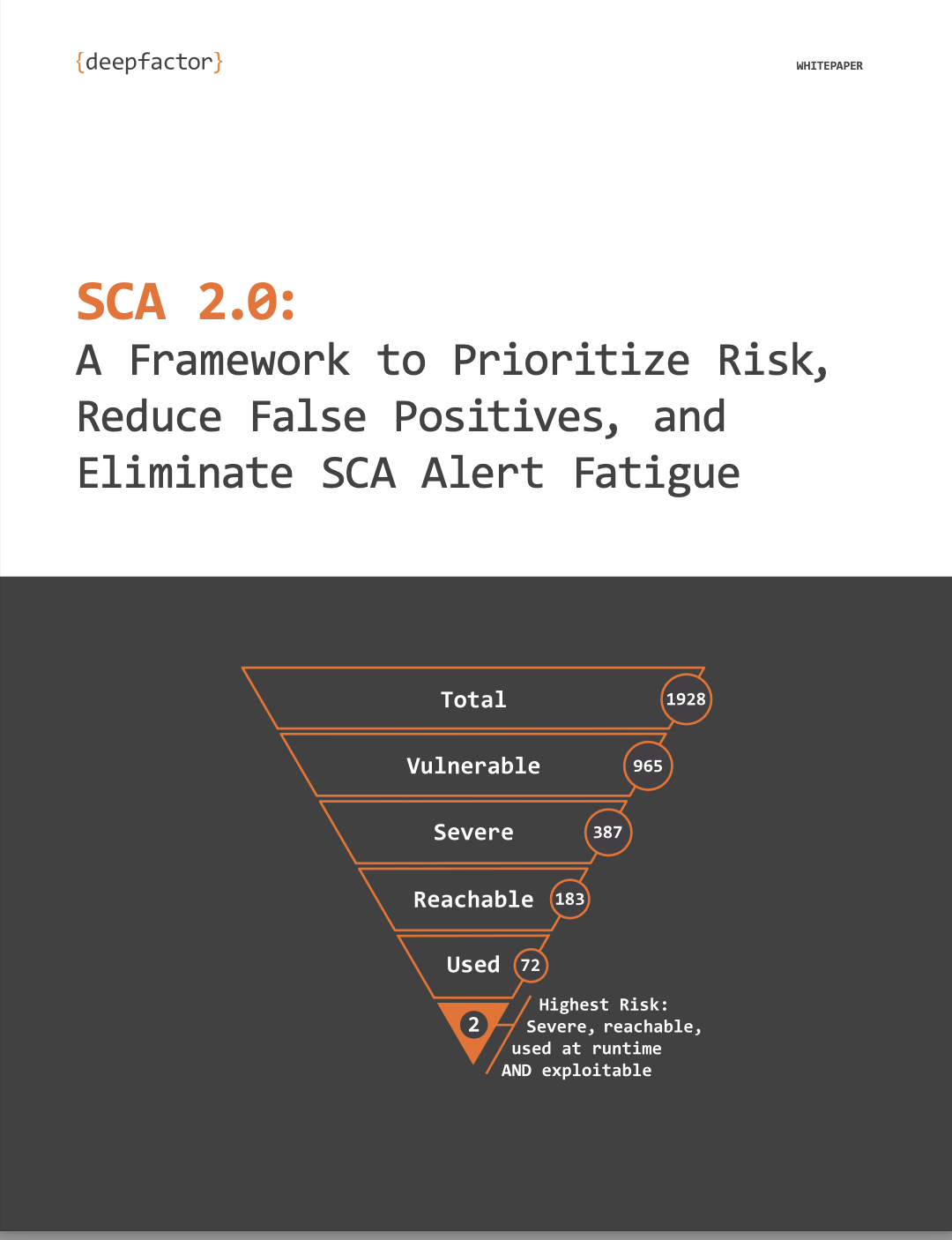What is SBOM?
The Software Bill of Materials (SBOM) is a detailed inventory of all software components used in an application or system. It includes information about each component’s version, origin, and dependencies. SBOMs provide a clear, structured representation of the software’s building blocks, which is essential for understanding and managing the software supply chain.
Importance of SBOM in Software Development
SBOMs are crucial for managing software components and dependencies. They ensure transparency and traceability throughout the software lifecycle, which is vital for addressing security vulnerabilities, tracking licensing obligations, and ensuring compliance with industry regulations. As the complexity of software systems increases, so does the need for a robust method to manage and document the various components involved. SBOMs are becoming increasingly important in this context. You can find additional details on their important in this whitepaper: SBOM Security: Top 5 Reasons to Build SBOMs Into Your Pipeline.
Explanation of SBOM as a Software Component Inventory
An SBOM serves as a comprehensive inventory of software components used in an application. It includes details such as the component’s name, version, origin, and associated metadata. This structured representation of the software’s building blocks allows developers, security professionals, and other stakeholders to gain insights into the software supply chain. By understanding the components that make up an application, organizations can address security vulnerabilities, track licensing obligations, and ensure compliance with industry regulations.
Comparison to Other Software Component Inventories
While similar to a traditional Bill of Materials (BOM) used in manufacturing, an SBOM is specifically tailored for software. Unlike BOMs that focus on physical parts and materials, SBOM captures software components, including open-source libraries, frameworks, modules, and third-party dependencies. SBOM also differs from the Manufacturing Bill of Materials (MBOM), which primarily relates to physical assembly processes. Instead, SBOM focuses on the software’s composition and related information. This distinction is crucial because software components are often more dynamic and complex than physical parts, requiring a more nuanced approach to inventory management.
Benefits of SBOM
Improved Supply Chain Security
SBOM enhances supply chain security by providing transparency into the software’s components. It allows organizations to identify and track vulnerabilities associated with specific components, enabling timely security patching and remediation. With an SBOM, organizations can proactively address security risks throughout the software development lifecycle. This proactive approach is essential in a landscape where cyber threats are constantly evolving.
Faster and More Accurate Component Identification
SBOM enables developers to quickly determine the specific versions and dependencies of components, facilitating debugging, troubleshooting, and maintenance tasks. Rapid identification also streamlines vulnerability management processes, aiding in the mitigation of security risks. By having a detailed inventory, developers can efficiently locate and address issues, reducing downtime and improving overall software quality.
Enhanced Compliance and Risk Management
SBOM helps organizations meet compliance requirements and manage risks effectively. By providing a detailed inventory of software components, including their licensing information, organizations can ensure compliance with open-source licenses, intellectual property rights, and regulatory frameworks. SBOM also aids in risk assessment, allowing organizations to evaluate the potential impact of vulnerabilities or component issues on their applications. This comprehensive understanding of software components is critical for informed decision-making and risk mitigation.
SBOM Generation
Methods for Generating SBOM
Automated Tools
Automated tools analyze software artifacts, such as application binaries, dependencies, and build configurations, to create an accurate and up-to-date inventory. These tools integrate with software development pipelines, scanning and extracting component information to generate SBOMs automatically. Automation ensures that the SBOM remains current as the software evolves, reducing the burden on developers and increasing accuracy.
Manually Maintained Spreadsheets
In some cases, SBOMs may be created and maintained manually using spreadsheets or other documentation formats. While this approach can be more time-consuming and prone to errors, it may be necessary for legacy systems or in environments where automated tools are not feasible. Manual methods require diligent updates and verification to ensure the SBOM remains accurate and useful.
Data Formats
To support automation—providing engineering teams with a mechanism to implement and scale solutions across the software supply chain—SBOM tooling requires predictable implementation, and machine and human- readable data formats. Though a single standard may provide simplicity and efficiency, according to the report, “multiple data formats exist in the ecosystem and are being used to generate and consume SBOMs. These specifications have been developed through open processes, with international participation … and have been deemed interoperable for the core data fields and use common data syntax representations.”
Today, there are three main SBOM formats:
| CycloneDX | CycloneDX is a lightweight SBOM standard designed for use in application security contexts and supply chain component analysis. CycloneDX started in the Open Web Application Security Project (OWASP) community, which manages the strategic direction and maintenance of the specification. The CycloneDX GitHub repository includes tools to create and consume SBOMs in various programming languages. |
| Software Package Data Exchange (SPDX) | The SPDX specification was developed by the open source software development community and is supported by a rich ecosystem of open-source tools and commercial providers. SPDX became the internationally recognized standard (ISO/IEC 5962:2021) for SBOMs in September 2021. |
| Software Identification (SWID) | SWID tags were designed to provide a transparent way for organizations to track their software inventory on managed devices. SWID tags contain descriptive information about a specific software release such as the product and version. NIST recommends adoption of the SWID Tag standard by software producers, and multiple standards bodies (e.g. IETF), and is working to incorporate SWID tag data into the National Vulnerability Database (NVD). |
Considerations for Generating SBOM
Accuracy
Ensuring the reliability of SBOM for security, compliance, and risk management purposes is paramount. Accurate SBOMs reflect the true state of the software components and their dependencies, enabling effective management and mitigation of risks.
Timeliness
Keeping the inventory up-to-date as new components are added or updated is crucial. Timely SBOM generation ensures that the inventory reflects the current state of the software, which is essential for effective security and compliance management.
Completeness
Capturing all relevant software components used in an application, including both direct and indirect dependencies, is essential. A complete SBOM encompasses all layers of the software stack, from the application code to libraries, frameworks, and other supporting components. This comprehensive approach ensures that no critical component is overlooked.
SBOM Use Cases
Software Vulnerability Management
SBOM allows organizations to identify and address vulnerabilities in software components proactively. By having a detailed inventory of all components, organizations can quickly locate and patch vulnerabilities, reducing the risk of exploitation.
Compliance with Industry Regulations
SBOM helps in adhering to industry regulations like PCI DSS by providing a detailed inventory of software components and their licensing information. This transparency ensures that all components meet regulatory requirements, reducing the risk of non-compliance.
Improved Collaboration Within Software Development Teams
SBOM enhances collaboration by providing a clear and structured representation of software components, enabling better communication and coordination among team members. By understanding the components and their relationships, teams can work more effectively, reducing misunderstandings and improving overall productivity.
Challenges and Limitations of SBOM
Challenges in Maintaining SBOM Accuracy and Completeness
The dynamic nature of software development, frequent component updates, and managing complex dependencies pose ongoing challenges. Ensuring that the SBOM remains accurate and complete requires continuous monitoring and updating, which can be resource-intensive.
Limitations of SBOM in Reflecting the True State of Software Components
SBOM may not always provide a real-time view of the software’s security posture. It relies on the availability of vulnerability data and may not capture newly discovered vulnerabilities immediately. Additionally, SBOMs can be limited in assessing the quality, performance, and architectural risks associated with software components. Despite these limitations, SBOM remains a valuable tool for managing software security and compliance.
Conclusion
Recap of the Importance of SBOM
SBOM is a critical asset for managing software security, compliance, and risk effectively. It provides visibility into software components, facilitates vulnerability management, and enhances collaboration within development teams. As the complexity of software systems increases, the importance of SBOMs will continue to grow.
Future Outlook for SBOM in Software Development
As software supply chains grow in complexity, the adoption of SBOM is expected to increase. Regulatory bodies are recognizing its importance, and advancements in automated analysis tools will contribute to the widespread adoption and evolution of SBOM practices. By following best practices and implementing robust security controls, organizations can significantly reduce the risk of security incidents and ensure that their software environments remain secure. The use of dedicated SBOM tools, regular monitoring, and adherence to principles like least privilege and immutable infrastructure are critical components of a comprehensive security strategy. As the software industry continues to evolve, SBOM will remain an essential tool for maintaining a secure and resilient software supply chain.
In conclusion, the Software Bill of Materials (SBOM) is an indispensable tool for modern software development. It provides a detailed inventory of software components, enhancing transparency, security, and compliance. By understanding and managing the components that make up their applications, organizations can proactively address security vulnerabilities, meet regulatory requirements, and improve collaboration within development teams. The adoption of SBOM practices is set to increase as software supply chains become more complex, making it a vital asset for ensuring the security and resilience of software systems.
FAQs
What is a Software Bill of Materials (SBOM)?
A Software Bill of Materials (SBOM) is a detailed inventory of all software components used in an application or system. It includes information about each component’s version, origin, and dependencies, enabling transparency and traceability throughout the software lifecycle.
Why is SBOM important in software development and security?
SBOM enhances supply chain security by providing transparency into the software’s components, allowing organizations to identify and track vulnerabilities, ensure compliance with licensing and regulatory requirements, and manage risks effectively.
How is an SBOM generated and maintained?
SBOMs can be generated through automated tools that analyze software artifacts or manually maintained using spreadsheets. Automated tools scan and extract component information to create accurate and up-to-date inventories, often integrated into software development pipelines to ensure continuous updates.
What are the best practices for effective SBOM management?
Best practices include regularly monitoring components at runtime, employing dedicated SBOM tools, regularly updating and patching components, limiting component capabilities, using namespaces for isolation, and implementing strong access controls to ensure only authorized personnel have access to components.
Free Demo Signup
Experience the power and efficiency of the Deepfactor Application Security Platform through a live, interactive demo.
SIGN UP TODAY! >


